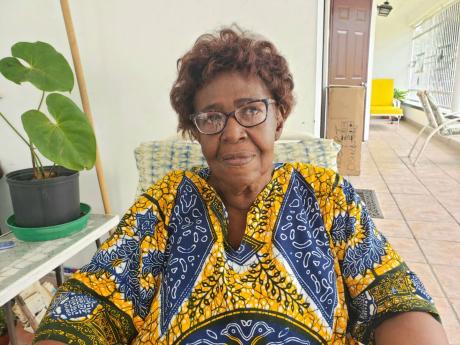Walk down history – Evolution of education in Jamaica
I recently had a chat with an eighty something year old retired educator Ena Campbell who lived through the brutal education system in the 1940s and 1950s in Jamaica. She looked back on the way the system was then.
“When I arrived in Jamaica from Cuba in the 1940s as a young girl, high school education in Jamaica was designed for the white and brown planter class”, Dr. Campbell said. “There were very few premium high schools back then, the schools were kept deliberately small to retain their elite status and only families who were well off could afford to send their children to the better schools.
“There were schools like Jamaica College, Wolmer’s, Knox and St. Hilda’s Diocesan High School in Brown’s Town, St. Ann but the fees were beyond the reach of most Jamaicans and the boarding schools back then were seen as finishing schools for aristocratic families. The schools were almost exclusively staffed by British expatriate teachers and a school like Westwood was established by a Baptist minister to provide an education for Jamaican girls who couldn’t get into St. Hilda’s”.
She said in the early days, outside of forking out 10 or 20 guineas (21 shillings) per term per child, the only way to get into the prized schools was to win one of two island scholarships that were available in each parish, with just about 30 super brilliant students islandwide having a shot at high school. She pointed out that in many cases, when the scholarship winners turned up to start their schooling, everyone knew who they were because they were of a darker hue than most of the class.
“Many of the schools practiced selectivity based on class, colour, and the moral as well as the social status of the parents”, Olive Senior wrote in her book Encyclopedia of Jamaican Heritage in reference to this pre-independence period.
Campbell, who worked for years at the African Caribbean Institute of Jamaica in cultural policy said an exploding class of Jamaicans had been exposed to travel to Panama, Cuba and the UK during the turn of the last century, and Black Jamaican families were becoming aware of the importance of a good education for securing a stable future. At that time, teachers colleges like Mico and Bethlehem were turning out Jamaican teachers of the highest quality. Some of these teachers who were not hired in the high school network resented the elitist structure of the school system. They realised that there was an urgent need for high school spaces and even before the 1940s they began setting up a number of independent high schools to fill the void.
INDEPENDENT SCHOOLS
Among the new wave of independent schools were Buxton High School, St. John’s, St. Monica’s and St. Simon’s College, the latter producing top tier graduates like G. Arthur Brown, former governor of the Bank of Jamaica, Hugh Shearer, former prime minister, the Hon. Louise Bennett, Dr. Joyce Robinson and other distinguished Jamaicans. Campbell asserted that while these schools offered an outstanding general education, they were not funded by government, and their one limitation was the lack of funds to expand facilities such as science labs.
“A loud and militant voice in the plight to find high school places for Jamaicans was Wesley A Powell who led a delegation of protest to the governor,” she recalled. “Powell had earlier been a victim of the system when he was denied admission to Womler’s, after being told that he was too old to enter, at the ripe old age of 13 years old. Powell later went on to establish Excelsior School on Mountain View Avenue in Kingston.
The work of former Anglican Bishop of Jamaica Percival W Gibson cannot be overstated. Apart form establishing Kingston College, other educational institutions were created under his tenure, including The Queens School and Glenmuir High, but the expansion also included infant, primary and teachers’ college. And the early appointment of Jamaican principals at both Kingston College and St. Hugh’s was also an important turning point in Jamaicanising the schools.
CATHOLIC SCHOOLS
Campbell said during her early years in Jamaica, Catholics too had established a number of schools in the Kingston area. Chinese, were among the first to leave the plantation culture, heading to Kingston. The urban Catholic schools then- St. George’s College, Convent of Mercy (Alpha) and Immaculate Conception - were heavily populated by the Chinese community in Kingston & St. Andrew. Many Blacks were unable to afford the high fees. It was years later that the ethnic composition of these schools began to change, reflecting the Afro Jamaican demographic.
“While nearly all the churches that set up schools in Jamaica were British in origin, American Church of God missionaries arrived on the island too and they established Ardenne High School which had an open door policy”, she said. “All were welcomed and the sense of dignity for every individual was unquestionable there. The fees were lower and if parents didn’t have the full fee at the start of the term, they could pay later”, Dr. Campbell stated.
This September, there are 35,292 students who will have places in high schools, a far cry from the 30 scholarship winners in the 1940s.

